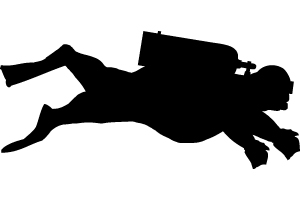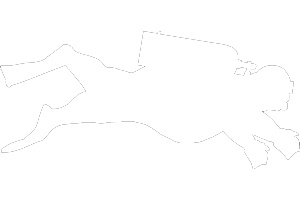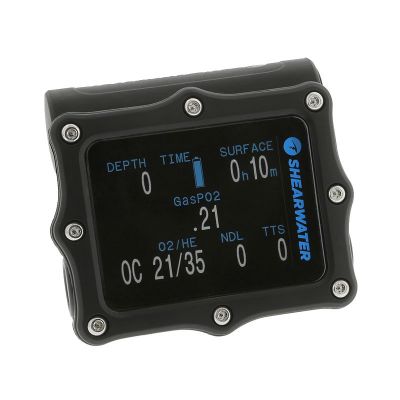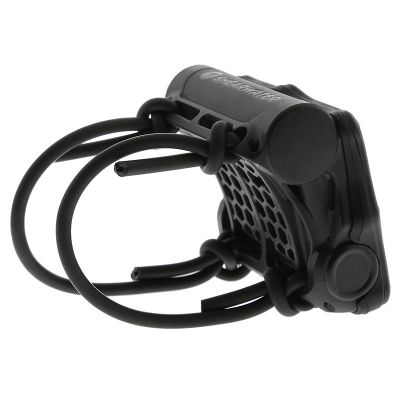Shearwater Perdix

The Shearwater Perdix has been the best dive computer we have ever owned.
Product Tested
Shearwater Perdix Dive Computer
Product Description
Advanced technical diving computer for open and
closed circuit divers.
Features include:
- Air/Nitrox/Trimix capable
- 5 open-circuit gas switch presets
- Bühlmann ZHL-16C algorithm with configurable Gradient Factors
- GF presets for sport diving NDL safety factor: High = 35/75, Medium = 40/85, Low = 45/95, plus user defined GF
- Optional VPM-B algorithm avaialble for about $60 US
- %CNS oxygen exposure tracking
- Ascent rate monitor
- Date, time and temp display
- Easy to read large full color screen
- Easy to use adaptive menus
- Logbook of last 1000 hours of diving
- Operational to at least { 853 ft | 260 m }
- Battery voltage and warning
- Battery life: About 45 hours of diving at medium brightness with 1.5V Alkaline. (130 hours with Saft 3.6V LS14500)
Cost
$850 US
The Review
We had been diving our Liquivision X1 computers for more than 10 years and they were slowly dying. We dreaded the thought of new computers with more difficult user interfaces that would be cluttered up with useless bells and whistles. We did quite a bit of research and finally decided on the Shearwater Perdix. We always dive two computers, so we ordered one “standard” Perdix, and the second with air integration (AI). The air integration uses the standard Pelagic Pressure Systems wireless HP transmitter, which worked out great since we already have a bunch of these. We don’t use the transmitters with our tech gear, but thought we might want this feature if we were diving our recreational setup and wanted to wear the Perdix. The Perdix We’ve been diving VPM-B since 2008, so we paid for the VPM-B upgrade for each.
(For you assholes out there that want to get in an argument over decompression algorithms, we only chose VPM-B because that’s what we’re most familiar with and not because we think it’s any better (or worse) than the traditional Bühlmann ZHL-16C)
Fresh out of the box, we were thrilled with the screen size and crystal clear display. Nice large fonts and graphics make for easy reading, which is a huge plus for our aging eyes. The Perdix comes with dual elastic wrist straps with quick release buckles. These straps allow for easy donning and adjustment, and are by far the best wrist straps we have used. You can tighten or loosen them with one hand without even looking down or ever having to take the computer off your wrist. Plus two straps means one can release or break and you’re computer stays on your wrist. We’ve all met or heard of someone who has lost a computer because they dropped it while trying to adjust the strap, or a strap breaks, so this is a great feature. You could, of course, use the standard bungee straps too, as pictured above.
The menus in the Perdix are all straightforward and intuitive. There are several screens you can cycle through during a dive, which give you additional information about that particular dive. We especially like seeing what our “true” ceiling is when we’re at a particular deco stop. I.e: You may have 10 minutes remaining at your 20 foot stop, but your actual ceiling is 6 feet. This could be incredibly useful in a low air emergency.
We originally used an Energizer Lithium battery in our Perdix and were getting around 50 1.5 hour dives before it would die, but the Lithium batteries don’t allow the Perdix to show a low battery warning before they just quit, so we switched to a plain old AA alakaline. Now we’re getting about 12 1.5 hour dives on a single AA alkaline battery with the screen at maximum brightness before the battery indicator scares us into putting a new one in.
Connecting the Perdix to our laptop was a snap. If you don’t have a bluetooth adapter, you will of course have to grab one on Amazon, ($10) but then it’s just a couple of clicks to upgrade firmware or download dive logs with the Shearwater Desktop software.
We dove our Perdix computers side by side with our X1s when we first got them to see if how they compared to deco stops and dive times. Both were VPM-B with the same conservatism. Both dove very similar profiles, but the Perdix kept us in the water about 5 minutes longer on a typical deco dive than the X1 did. Since we’re only getting older and fatter, we decided this was an acceptable level of additional safety and didn’t attempt to tweak the algorithm to shorten our deco.
All in all, the Perdix is great.
Pros
- Large size display with easily readable fonts and graphics.
- Very intuitive interface.
- Built tough. Very tough.
- Simple but highly effective dual wrist straps.
- Easily replaceable AA battery.
- Built in compass.
- Bluetooth support for firmware updates and dive log upload.
- Easy firmware updates & dive log export.
Cons
- The polycarbonate screen cover scratches fairly easily, but there is an available screen protector, plus the screen cover can be replaced by a service center.
Would recommend this computer?
Recreational diver: NO (Feature overkill for a recreational diver)
Technical diver: YES
Conclusion
We’ve said this several times now in this review, but we’ll say it here again: The Shearwater Perdix has been the best dive computer we have ever owned. User friendly. Large clear display. Easy to don and adjust. Easily replaceable AA batteries. Bulletproof design.



